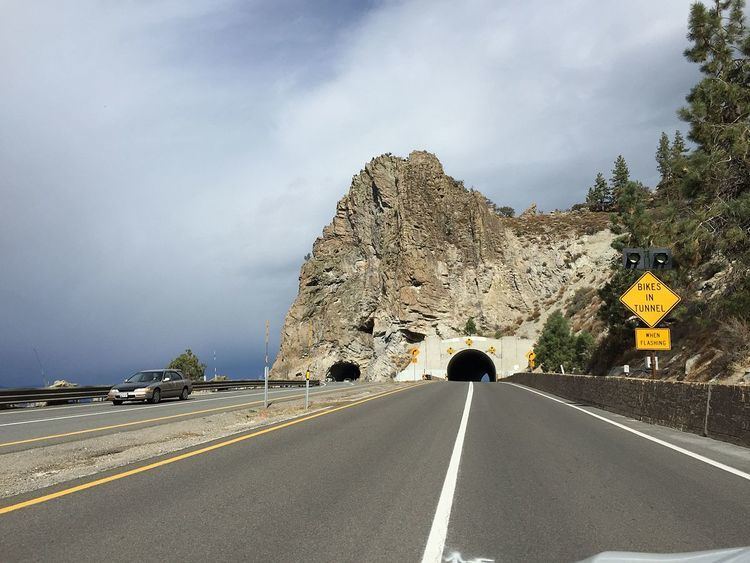Route US 50 Vehicles per day 12,500 Highest elevation 1,939 m Number of lanes 4 | Opened 1931 Phone +1 775-588-7975 | |
 | ||
Character Dual bore highway tunnel Hours Open today · 6AM–8PMMonday6AM–8PMTuesday6AM–8PMWednesday6AM–8PMThursday6AM–8PMFriday6AM–8PMSaturday6AM–8PMSunday6AM–8PM Similar Sierra Nevada, Lake Tahoe – Nevada S, Spooner Summit, Emerald Bay State Park, Kahle Park | ||
The Cave Rock Tunnel is a dual bore highway tunnel on U.S. Route 50 (US 50) along the eastern shore of Lake Tahoe approximately seven miles (11.4 km) north of Stateline, in Douglas County, Nevada, United States. To the Washoe Indian Tribe, Cave Rock (Washo: De ek Wadapush ) is considered a sacred place and the tribe has placed restrictions on recreational activities in the vicinity of the tunnel.
Contents
Cave rock tunnel
Description
The tunnels carry U.S. Route 50 through Cave Rock, a mountain along the eastern shore of Lake Tahoe. There are numerous small caves adjacent to the south portal of both tunnels which give the rock its name. The tunnel is located between the towns of Zephyr Cove and Glenbrook along the US 50 corridor. This portion of US 50 is a National Scenic Byway, part of the Lake Tahoe - Eastshore Drive. The westbound bore is 153 feet (47 m) long and features exposed rock; the eastbound bore features a concrete liner and is 410 feet (120 m) long. The tunnels are an elevation of at approximately 6,360 feet (1,940 m), about 80 feet (24 m) above the level of the lake.
History
The tunnel dates back to the Lincoln Highway. Originally the Lincoln Highway was routed along a single lane hanging bridge and rock wall built in 1863. Recognizing the inadequacy of the single lane road, efforts began to improve capacity on the primary road to Lake Tahoe. The first bore was constructed in 1931, as part of a reconstruction of a 3-mile (4.8 km) section of the Lincoln Highway. Concerned about damaging Cave Rock, the project managers employed key people from the recently completed Zion-Mt. Carmel Tunnel in what is now Zion National Park in Utah. The first traffic began flowing through the bore in mid-September of that year. Construction on the second bore began in 1957, when US 50 was widened to four lanes, at a cost of just over $450,000 (equivalent to $4 million today). Coincidentally, both bores were constructed by Utah-based construction companies.
After a 2015 rockslide, and observations of more unstable rock in the area, the Nevada Department of Transportation initiated a safety improvement and retrofit project in 2016. The project retrofitted the original 1931 bore with a concrete liner and extended the tunnel by 60 feet (18 m) on its north end by constructing a rock fall shelter to protect the roadway from falling rocks. The retrofit included new lighting for both tunnels, and variable message signs on the approaches designed to activate upon the presence of bicyclists or ice inside the tunnel.
Tribal relations
The Cave Rock area is considered sacred by the Washoe tribe. The Washoe tribal leaders were not consulted about the construction of either bore, and were upset about the perceived desecration of their tribal lands. Within the last decade, the Washoe Tribe has had a larger influence on Cave Rock and its historic preservation. In 2007, the Federal Government ruled on a precedent-setting case that has restricted activities around the tunnel, such as rock climbing.
